
Ulmus × hollandica 'Vegeta', sometimes known as the Huntingdon Elm, is an old English hybrid cultivar raised at Brampton, near Huntingdon, by nurserymen Wood & Ingram in 1746, allegedly from seed collected at nearby Hinchingbrooke Park. In Augustine Henry's day, in the later 19th century, the elms in Hinchingbrooke Park were U. nitens. Richens, noting that wych elm is rare in Huntingdonshire, normally flowering four to six weeks later than field elm, pointed out that unusually favourable circumstances would have had to coincide to produce such seed: "It is possible that, some time in the eighteenth century, the threefold requirements of synchronous flowering of the two species, a south-west wind", "and a mild spring permitting the ripening of the samaras, were met."
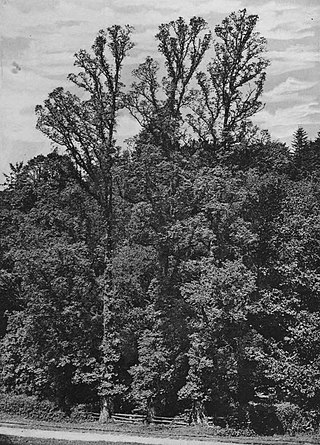
The field elm cultivar Ulmus minor 'Stricta', known as Cornish elm, was commonly found in South West England, Brittany, and south-west Ireland, until the arrival of Dutch elm disease in the late 1960s. The origin of Cornish elm in England remains a matter of contention. It is commonly assumed to have been introduced from Brittany. It is also considered possible that the tree may have survived the ice ages on lands to the south of Cornwall long since lost to the sea. Henry thought it "probably native in the south of Ireland". Dr Max Coleman of Royal Botanic Garden Edinburgh, arguing in his 2002 paper on British elms that there was no clear distinction between species and subspecies, suggested that known or suspected clones of Ulmus minor, once cultivated and named, should be treated as cultivars, preferred the designation U. minor 'Stricta' to Ulmus minor var. stricta. The DNA of 'Stricta' has been investigated and the cultivar is now known to be a clone.
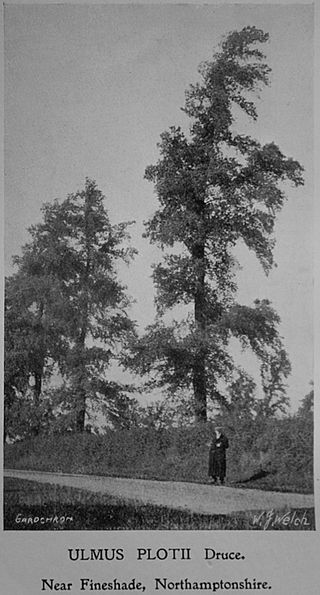
The field elm cultivar Ulmus minor 'Plotii', commonly known as Lock elm or Lock's elm, Plot's elm or Plot elm, and first classified as Ulmus sativaMill. var. Lockii and later as Ulmus plotii by Druce in 1907-11, is endemic mainly to the East Midlands of England, notably around the River Witham in Lincolnshire, in the Trent Valley around Newark-on-Trent, and around the village of Laxton, Northamptonshire. Ronald Melville suggested that the tree's distribution may be related to river valley systems, in particular those of the Trent, Witham, Welland, and Nene. Two further populations existed in Gloucestershire. It has been described as Britain's rarest native elm, and recorded by The Wildlife Trust as a nationally scarce species.
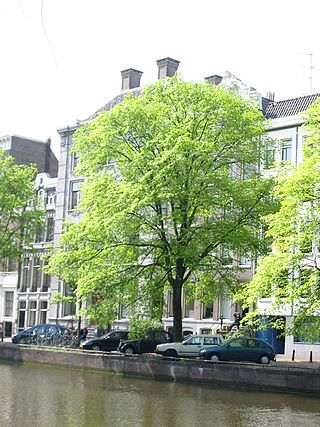
The hybrid elm cultivar Ulmus × hollandica 'Belgica', one of a number of hybrids arising from the crossing of Wych Elm with a variety of Field Elm, was reputedly raised in the nurseries of the Abbey of the Dunes, Veurne, in 1694. Popular throughout Belgium and the Netherlands in the 19th century both as an ornamental and as a shelter-belt tree, it was the 'Hollandse iep' in these countries, as distinct from the tree known as 'Dutch Elm' in Great Britain and Ireland since the 17th century: Ulmus × hollandica 'Major'. In Francophone Belgium it was known as orme gras de Malines.
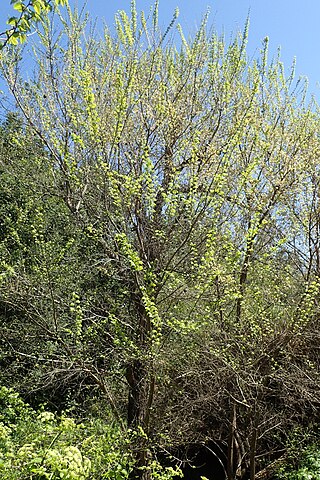
Ulmus minorsubsp.canescens is a small deciduous tree occasionally known by the common names grey elm, grey-leafed elm, and hoary elm. Its natural range extends through the lands of the central and eastern Mediterranean, from southern Italy, the islands of Sicily, Malta, Crete, Rhodes and Cyprus, to Turkey, and as far south as Israel, where it is now considered rare and endangered in the wild. The tree is typically found amidst the comparatively humid coastal woodlands and scrublands.
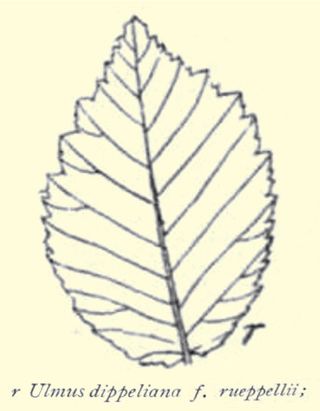
Ulmus minor 'Rueppellii' is a Field Elm cultivar said to have been introduced to Europe from Tashkent by the Späth nursery, Berlin. Noted in 1881 as a 'new elm', it was listed in Späth Catalogue 73, p. 124, 1888–89, and in subsequent catalogues, as Ulmus campestris Rueppelli, and later by Krüssmann as a cultivar.
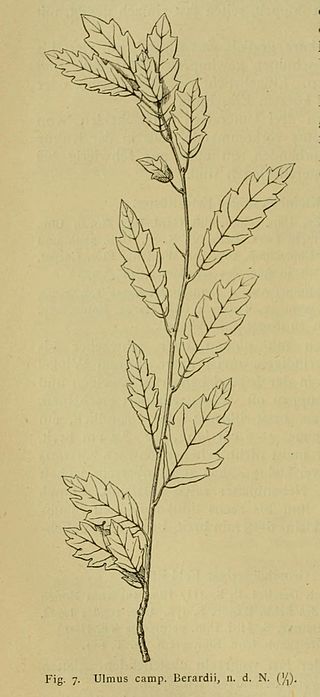
The elm cultivar Ulmus 'Berardii', Berard's Elm, was raised in 1865, as Ulmus Berardi, from seeds collected from large specimens of "common elm" growing on the ramparts at Metz, by an employee of the Simon-Louis nursery named Bérard. Carrière (1887), the Späth nursery of Berlin and the Van Houtte nursery of Gentbrugge regarded it as form of a Field Elm, listing it as U. campestris Berardii, the name used by Henry. Cheal's nursery of Crawley distributed it as Ulmus nitens [:Ulmus minor] 'Berardii'. Smith's of Worcester preferred the original, non-specific name, Ulmus 'Berardii'.

The Field Elm cultivar Ulmus minor 'Webbiana', or Webb's curly-leaf elm, distinguished by its unusual leaves that fold upwards longitudinally, was said to have been raised at Lee's Nursery, Hammersmith, London, circa 1868, and was first described in that year in The Gardener's Chronicle and The Florist and Pomologist. It was marketed by the Späth nursery of Berlin in the late 19th and early 20th centuries as U. campestris WebbianaHort., and by Louis van Houtte of Ghent as U. campestris crispa (Webbiana). Henry thought 'Webbiana' a form of Cornish Elm, adding that it "seems to be identical with the insufficiently described U. campestris var. concavaefoliaLoudon" – a view repeated by Krüssmann.
The Elm cultivar Ulmus 'Tiliaefolia' was first mentioned by Host in Flora Austriaca (1827), as Ulmus tiliaefolia [:linden-leaved]. The Späth nursery of Berlin distributed a 'Tiliaefolia' from the late 19th century to the 1930s as neither an U. montana hybrid nor a field elm cultivar, but simply as Ulmus tiliaefolia, suggesting uncertainty about its status. Herbarium specimens appear to show two clones, one smaller-leaved and classified as a field elm cultivar, the other larger-leaved.
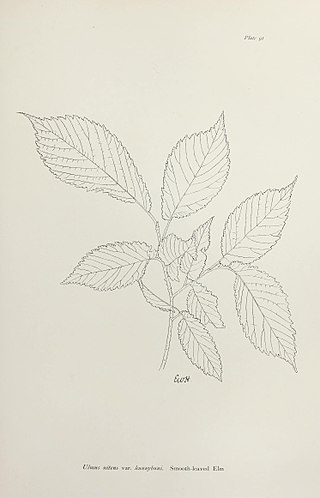
The Field Elm cultivar Ulmus minor 'Hunnybunii' was originally identified as U. nitens var. HunnybuniiMoss by Moss in The Cambridge British Flora (1914). 'Hunnybunii' was reputed to have been commonly planted in the parklands and hedgerows of Essex, Cambridgeshire, and Huntingdonshire before the advent of Dutch elm disease. Melville considered the tree a hybrid of 'Coritana'.
The elm cultivar Ulmus 'Tortuosa'Host, the Wiggly Elm, was described by Host in Flora Austriaca (1827) as Ulmus tortuosa, from low, twisted, small-leaved trees that grew in the hilly districts of Hungary. A contemporary herbarium specimen (1833) from Central Europe labelled U. tortuosaHost appears to show small field elm-type leaves. Henry distinguished 'Tortuosa' Host from Loddiges' and Loudon's U. tortuosa, which he identified with Ulmus 'Modiolina', "l'orme tortillard" of France. Henry noted, however, that abnormal sinuous or zigzagging growth "might occur in any kind of elm", and herbarium specimens of elms labelled 'Tortuosa' range from U. minor cultivars to hybrid cultivars, some treated as synonymous with 'Modiolina'. A large-leaved U. campestris tortuosa was described by David in Revue horticole (1846), while a hybrid var. tortuosa cultivar from Louveigné, Belgium, with twisted trunk and large leaves, was described by Aigret in 1905. An U. campestris suberosa tortuosa was marketed in the 1930s by the Hesse Nursery of Weener, Germany, by its description a contorted form of corky-barked field elm.
The elm cultivar Ulmus 'Lombartsii' is considered "possibly Ulmus × hollandica or Ulmus carpinifolia " by Green (1964). The tree was raised by Lombarts Nurseries at Zundert, Netherlands, circa 1910.
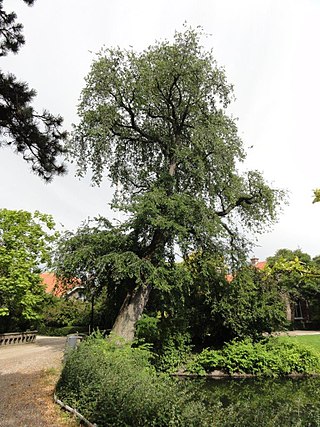
The Field Elm cultivar Ulmus minor 'Pendula' was said to have been raised in Belgium in 1863. It was listed as Ulmus sativa pendula by C. de Vos in 1887, and by Boom in 1959 as a cultivar.

The elm cultivar Ulmus 'Scampstoniensis', the Scampston Elm or Scampston Weeping Elm, is said to have come from Scampston Hall, Yorkshire, England, before 1810. Loudon opined that a tree of the same name at the Royal Horticultural Society's Garden in 1834, 18 feet (5.5 m) high at 8 years old "differed little from the species". Henry described the tree, from a specimen growing in Victoria Park, Bath, as "a weeping form of U. nitens" [:Ulmus minor ]; however Green considered it "probably a form of Ulmus × hollandica". Writing in 1831, Loudon said that the tree was supposed to have originated in America. U. minor is not, however, an American species, so if the tree was brought from America, it must originally have been taken there from Europe. There was an 'American Plantation' at Scampston, which may be related to this supposition. A number of old specimens of 'Scampstoniensis' in this plantation were blown down in a great gale of October 1881; younger specimens were still present at Scampston in 1911.
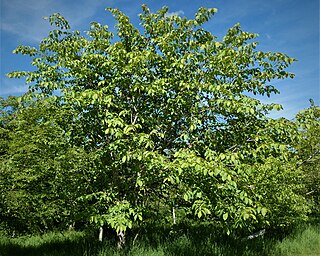
The elm Ulmus wallichiana subsp. xanthoderma was identified by Melville and Heybroek after the latter's expedition to the Himalaya in 1960. The tree is of more western distribution than subsp. wallichiana, ranging from Afghanistan to Kashmir.
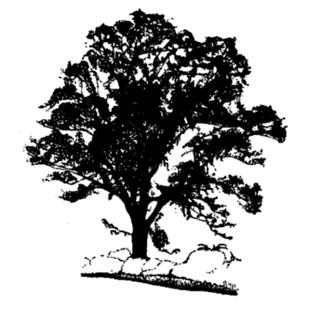
The Field Elm cultivar Ulmus minor 'Coritana' was originally claimed by Melville, while he was searching in the neighbourhood of Leicestershire in 1936 for U. elegantissima, as a new species, which he called U. coritana. He later recorded its distribution in the counties of Bedfordshire, Berkshire, Buckinghamshire, Cambridgeshire, Essex, Hertfordshire, Leicestershire, Nottinghamshire, Norfolk, Oxfordshire, Suffolk and Warwickshire. Richens, however, dismissed U. coritana as 'an artificial aggregate' of local forms of Field Elm. Bean noted (1988) that Melville's U. coritana was not recognised in the Flora of the British Isles as a species distinct from U. carpinifolia [:U. minor].

The Field Elm cultivar Ulmus minor 'Suberosa', commonly known as the Cork-barked elm, is a slow-growing or dwarf form of conspicuously suberose Field Elm. Of disputed status, it is considered a distinct variety by some botanists, among them Henry (1913), Krüssmann (1984), and Bean (1988), and is sometimes cloned and planted as a cultivar. Henry said the tree "appears to be a common variety in the forests of central Europe", Bean noting that it "occurs in dry habitats". By the proposed rule that known or suspected clones of U. minor, once cultivated and named, should be treated as cultivars, the tree would be designated U. minor 'Suberosa'. The Späth nursery of Berlin distributed an U. campestris suberosa alataKirchn. [:'corky-winged'] from the 1890s to the 1930s.
The Field Elm cultivar Ulmus minor 'Viminalis Betulaefolia' (:'birch-leaved') is an elm tree of uncertain origin. An U. betulaefolia was listed by Loddiges of Hackney, London, in the catalogue of 1836, an U. campestris var. betulaefolia by Loudon in Arboretum et Fruticetum Britannicum (1838), and an U. betulifoliaBooth by the Lawson nursery of Edinburgh. Henry described an U. campestris var. betulaefolia at Kew in 1913, obtained from Fulham nurseryman Osborne in 1879, as "scarcely different from var. viminalis ". Melville considered the tree so named at Kew a form of his U. × viminalis, while Bean (1988), describing U. 'Betulaefolia', likewise placed it under U. 'Viminalis' as an apparently allied tree. Loudon and Browne had noted that some forms of 'Viminalis' can be mistaken for a variety of birch. An U. campestris betulaefolia was distributed by Hesse's Nurseries, Weener, Germany, in the 1930s.

The field elm cultivar Ulmus minor 'Viminalis' (:'willow-like'), occasionally referred to as the twiggy field elm, was raised by Masters in 1817, and listed in 1831 as U. campestris viminalis, without description. Loudon added a general description in 1838, and the Cambridge University Herbarium acquired a leaf specimen of the tree in 1866. Moss, writing in 1912, said that the Ulmus campestris viminalis from Cambridge University Herbarium was the only elm he thought agreed with the original Plot's elm as illustrated by Dr. Plot in 1677 from specimens growing in an avenue and coppice at Hanwell near Banbury. Elwes and Henry (1913) also considered Loudon's Ulmus campestris viminalis to be Dr Plot's elm. Its 19th-century name, U. campestris var. viminalis, led the cultivar to be classified for a time as a variety of English Elm. On the Continent, 'Viminalis' was the Ulmus antarcticaHort., 'zierliche Ulme' [:'dainty elm'] of Kirchner's Arboretum Muscaviense (1864).
The Field Elm cultivar Ulmus minor 'Glandulosa' was described as Ulmus glabra [:smooth-leaved] Mill. var. glandulosa by Lindley in A Synopsis of British Flora, arranged according to the Natural Order (1829), from trees near Ludlow, Shropshire. Melville identified a specimen in Ludlow in 1939, calling it in a 1946 paper "a good form of U. carpinifolia" [:U. minor ], describing it more fully and renaming it U. carpinifoliaGled. var. glandulosa (Lindl.). Regarding it as out of its natural range and deliberately planted, he referred to it as The Ludlow Elm, the "type tree" of a "variety" of Field Elm. Herbarium specimens of 'Glandulosa' are held in both the Lindley Herbarium in Cambridge and the Borrer Herbarium at Kew.
















